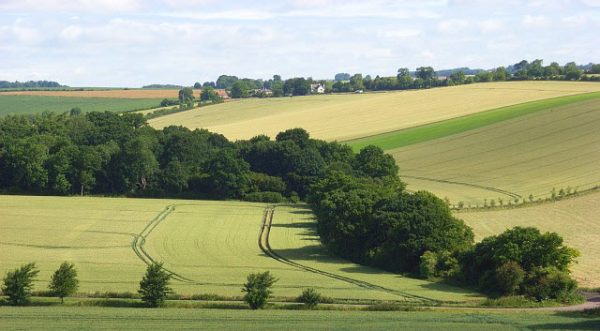My great grandmother, Ellen Cleverley, was born in 1861 in Southwark but her father, Edward Cleverley, was born in West Shefford in Berkshire and had moved to London in the mid-1850s. The different members of his family all lived in Hungerford or the surrounding villages within a six-mile radius (Lambourn, Shefford in Berkshire, Ramsbury and Froxfield in Wiltshire).
The family of Edward’s grandmother, Mary Brown (1786-1863), had been living in Shefford since at least the late 1680s. The Cleverleys and their relatives worked in agriculture as labourers and as carters. This would have been hard physical work and they would have lived barely above subsistence levels. Once the physical capacity to work had gone (through age or disability) they would have been paupers, dependent upon the parish.

The land around Shefford was mostly used for arable farming and, according to William Mavor, writing in 1813, “very productive”. Mavor’s report “General View of the Agriculture in Berkshire” was written for the government’s Board of Agriculture at a time when agricultural communities were undergoing fundamental change due to the industrial revolution and mechanisation of farming practices. Small farms were being consolidated into large ones, having the effect of “throwing persons of small capital… out of employ and reducing them to the rank of hired labourers”.
The transition to larger farms was necessary in order to feed the growing number of industrial workers in the towns and cities. Much of Berkshire’s agricultural production was being sent to London via the Kennet and Avon canal. Small farms didn’t produce less per se but, as Mavor observed, 1,000 acres farmed by two families would produce far more surplus for the market than if it were farmed by eight families “who work hard and live poor, to pay even a small rent, having seldom any thing to carry to market, their own sustenance consuming nearly all the produce of their small farm”. Farms around Great Shefford were mostly of around 200 acres (approx. 80 hectares) and there had been a growing number of new farms – either arable growing wheat and barley or meadows for sheep, mainly Wiltshire Horn, a breed which requires little maintenance. Those farms would have provided work for the Cleverley family.
This work, though, was far from easy. It was long, hard work, mostly outside in all weathers, working from six to six in the summer and from seven to five in the winter. Women were employed mostly in the summer months and at busier times of the year; contemporary reports tell us that women did a lot of the weeding of crops. According to J Spearing in his work “On the Agriculture of Berkshire” (1860), agricultural wages had been rising but poverty and economic insecurity was the norm. As Mavon points out, wages were “still inadequate to support a family, without driving a man, on every emergency, to the parish for support”. Such support was not generous or easy to come by. In many parishes the local publican or the clergy ran Benefit Societies which, for the cost of a small monthly subscription, would provide some medical support and 10 shillings or so a week in case of illness preventing a labourer from working.
A common view of the working class at the time was that they “do less the better they are paid” and that they were too often dishonest, idle or inebriated and “indulged themselves … in the superfluities of tea, etc”. It was common for labourers to drink beer throughout the day, although by the 1860s that practice had largely been discontinued except during harvest and haymaking (when they would be out in the fields all day). Then the men would get “three or four quarts of ale and boys two quarts per day”; a quart is two pints.
Harvesting was paid by the acre, according to the kind of crops – reaping paid 10s per acre, mowing barley 3s 6d, mowing grass 3s, hoeing beans or peas 4s and hoeing turnip 5s. The labourers were paid in cash every Friday.
Agricultural labourers’ dwellings in west Berkshire were generally good, according to Spearing’s account, but there was a wide range of living conditions, depending on the type and wealth of the employing farmer. The better farmers might provide 3 bedroom cottages with allotment gardens of 30 or 40 poles, let at 1s per week; the worst Spearing described as “hovels” let at higher rents. [Modern day allotments are often still measured in poles and are typically between 4-6 poles in size.]
Although Great Shefford in the 1850s was very much a rural farming community, it was not isolated from the surrounding towns and transport routes. It was linked to neighbouring towns by reasonable roads, although many of the roads were not well maintained, being “narrow and full of ruts, though seldom deep”. Spearing states “Lambourn, Hungerford and Newbury were accessible” and, further afield, the Bath Road, which went through Hungerford, was the main coaching route from Bath and Bristol up to London. The Kennet and Avon canal was nearby and, according to Mavor, had nearly thirty mills of different kinds – corn, paper, clothing and fulling – that may have attracted Edward and led to him working his way to London on a canal barge.
